- Administrator
- Albums and Singles
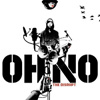 To date his resumeincludes production duties for MURS, Mr. Lif, Wildchild, CL Smooth andDeclaime, and has dropped many a verse on records produced by Madlib,Stones Throw patriarch Peanut Butter Wolf, and others. The reason forthe debut's delay is unclear; he's been signed for a while and has beenrecording even longer—he did his first demo at age eleven, was foolingwith production equipment in Madlib's room long before then, and in hisadult years put out a slew of singles in addition to his guest spots.The favor is returned on The Disrupt:Jay Dee provides a heavy Detroit club banger, Madlib gives brotherlylove on six eclectic tracks, and other members of the extended StonesThrow family also lend a hand. The foundation for a great debut isthereby laid, but something seems to be missing. Oh No is supposed tobe the star, and the veteran of one too many a guest spot and 12" can'tseem to carry the load through the admittedly solid seventeen trackswithout the help. The album teems talent and creativity but at thesacrifice of cohesion, balance and continuity: the heavy hitting TheRide (with samples pulled from Nintendo classic Ninja Gaiden) is followed up by mellow, soulful thought-provoker Getaway. The years that Oh No spent creating snippets of material rather than longplayers are evident on The Disrupt.It works two ways: he's clearly picked up nearly all the tricks of thetrade, and provides nearly everything the hip hop listener could wanton the multifaceted Disrupt. But in the end, the record feelshewn together, an amalgamation of otherwise worthy parts but not aperfect whole. That in turn raises the question of whether or not hiphop is an album-oriented genre—and if Oh No has picked up anything fromMadlib, he should be advised to follow up The Disrupt withsomething more cohesive. This is the only complaint, though, and it's aminor one. Oh No's talents as producer, MC and DJ are evident. Thesecombined with the guest spots make what might be slapdash patchwork forsome a delicious rap smorgasbord for others.
To date his resumeincludes production duties for MURS, Mr. Lif, Wildchild, CL Smooth andDeclaime, and has dropped many a verse on records produced by Madlib,Stones Throw patriarch Peanut Butter Wolf, and others. The reason forthe debut's delay is unclear; he's been signed for a while and has beenrecording even longer—he did his first demo at age eleven, was foolingwith production equipment in Madlib's room long before then, and in hisadult years put out a slew of singles in addition to his guest spots.The favor is returned on The Disrupt:Jay Dee provides a heavy Detroit club banger, Madlib gives brotherlylove on six eclectic tracks, and other members of the extended StonesThrow family also lend a hand. The foundation for a great debut isthereby laid, but something seems to be missing. Oh No is supposed tobe the star, and the veteran of one too many a guest spot and 12" can'tseem to carry the load through the admittedly solid seventeen trackswithout the help. The album teems talent and creativity but at thesacrifice of cohesion, balance and continuity: the heavy hitting TheRide (with samples pulled from Nintendo classic Ninja Gaiden) is followed up by mellow, soulful thought-provoker Getaway. The years that Oh No spent creating snippets of material rather than longplayers are evident on The Disrupt.It works two ways: he's clearly picked up nearly all the tricks of thetrade, and provides nearly everything the hip hop listener could wanton the multifaceted Disrupt. But in the end, the record feelshewn together, an amalgamation of otherwise worthy parts but not aperfect whole. That in turn raises the question of whether or not hiphop is an album-oriented genre—and if Oh No has picked up anything fromMadlib, he should be advised to follow up The Disrupt withsomething more cohesive. This is the only complaint, though, and it's aminor one. Oh No's talents as producer, MC and DJ are evident. Thesecombined with the guest spots make what might be slapdash patchwork forsome a delicious rap smorgasbord for others. samples:
Read More
- Administrator
- Albums and Singles
Hipshot
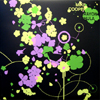
His long-standinginterest in Hawaiian steel guitar, Pacific culture and exotica reachedits apex last year with the release of his Rayon Hulaalbum, a fascinating experimental work combining dizzying loops fromold Arthur Lyman records with Cooper's impressive improvisation onsteel guitar.
Cooper's new limited CD-R release on his own Hipshotlabel is a recording of an October 2003 live performance at animprovised music festival in Rome. The live set is composed of onelong, slowly evolving piece combining field recordings, real-timesampling, digital treatment and loops with live improvisation onCooper's 1920 National tri-plate lap steel guitar. It's a richlyevocative work that meanders lazily through oceanic expanses ofelectronic twitters and drones, to lush jungle landscapes filled withexotic birds and hypnotic curls of delayed steel guitar. Twice duringthe performance, all of the disparate elements gel unexpectedly intogentle vocal songs.
The first is a cover of Van Dyke Parks' "Movies IsMagic," and Cooper transforms the nostalgic ode to old Hollywood into awarm and nuanced thing of beauty, with his lazy ripples of guitar givenjust the right touch of digital processing. The other song is"Dolphins," a track by 1960s folk singer Fred Neil (though TimBuckley's haunting rendition is probably the most notable), whichCooper gives a soulful rendition against a backdrop of abstractelectronic noise and sparse, minimal guitar. At times during thelengthy experimental interludes, especially during the "Virtual Surfer"section, the dense noisy textures, animal sounds and psychedelicelectronics sound remarkably similar to Black Dice's recent Creature Comforts.
The album is incredibly rich and evocative, and as a live performance,it's utterly flawless. Cooper takes live guitar processing and samplingas his raw material, using it to build something complex andsubstantive, full of ideas and surprises, not just abandoning ithalf-formed. Everyone who thought Fennesz' last record was the best of2004 would do well to listen to Mike Cooper's Reluctant Swimmer/Virtual Surfer,to hear similar musical strategies brought to their full potential by aveteran musician in his artistic prime. As usual, the only way to get acopy of this limited CD-R is to send the artist cash inside a birthdaycard to Hipshot headquarters in Rome. Frankly, I find it incrediblethat one of the many trendy experimental record labels in Europe hasn'tsnatched up Cooper's last few albums for a wider release.
samples:
Read More
- Administrator
- Albums and Singles
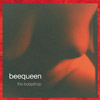 All of their work up to this album has been strictlyinstrumental: amorphous compositions, largely ambient, combiningelectronic textures and drone with murky samples, buried melodies andother unidentifiable audio goop. The Bodyshop is a departurepoint for the group; not only is melody front and center on almost allof the tracks, several actually feature vocals. Just to place thisalbum is stark relief to previous efforts, Beequeen also include acover of Nick Drake's "Black Eyed Dog," with lovely vocals byMarie-Louise Munck of Danish band Armstrong. This is still identifiableas the work of Beequeen, but it feels like a quantum leap for the bandin terms of structure, composition and production. There are stillplenty of pretty moments of quiet psychedelic nebulousness, but thereare also upbeat numbers like "On the Road to Everywhere," which sets alively post-jazz melody against layers of encroaching drone andchirping arpeggiators. It achieves a beautiful complexity, with certainelements standing out in bold relief and others blurry and shapeless,just beyond the realm of cohesion, like thick globs of color on aparticularly formless work of impressionist art. On the whole, thealbum feels very sedate and beatific, but there are tense undercurrentsof radiant darkness that permeate tracks like "Blackburn" and "BuzzbagDrive." The latter is a standout track, a dark Lynchian westernfeaturing noisy swathes of electric guitar from guest Erik Drost,member of Girlfriends and newly of the Pink Dots. At 37 minutes, thealbum feels a bit truncated, but not a moment is wasted. It's unclearwhether this is indicative of Beequeen's future artistic direction, orwhether this was a one-off tangent into partial coherence. Either way,it's a very welcome departure for the group, and speaks to theirongoing evolution and unwillingness to submit to the forces of creativeinertia.
All of their work up to this album has been strictlyinstrumental: amorphous compositions, largely ambient, combiningelectronic textures and drone with murky samples, buried melodies andother unidentifiable audio goop. The Bodyshop is a departurepoint for the group; not only is melody front and center on almost allof the tracks, several actually feature vocals. Just to place thisalbum is stark relief to previous efforts, Beequeen also include acover of Nick Drake's "Black Eyed Dog," with lovely vocals byMarie-Louise Munck of Danish band Armstrong. This is still identifiableas the work of Beequeen, but it feels like a quantum leap for the bandin terms of structure, composition and production. There are stillplenty of pretty moments of quiet psychedelic nebulousness, but thereare also upbeat numbers like "On the Road to Everywhere," which sets alively post-jazz melody against layers of encroaching drone andchirping arpeggiators. It achieves a beautiful complexity, with certainelements standing out in bold relief and others blurry and shapeless,just beyond the realm of cohesion, like thick globs of color on aparticularly formless work of impressionist art. On the whole, thealbum feels very sedate and beatific, but there are tense undercurrentsof radiant darkness that permeate tracks like "Blackburn" and "BuzzbagDrive." The latter is a standout track, a dark Lynchian westernfeaturing noisy swathes of electric guitar from guest Erik Drost,member of Girlfriends and newly of the Pink Dots. At 37 minutes, thealbum feels a bit truncated, but not a moment is wasted. It's unclearwhether this is indicative of Beequeen's future artistic direction, orwhether this was a one-off tangent into partial coherence. Either way,it's a very welcome departure for the group, and speaks to theirongoing evolution and unwillingness to submit to the forces of creativeinertia. samples:
Read More
- Administrator
- Albums and Singles
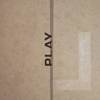 For Play, their first album for Important Records, Larsenare still using the same basic sound palette as their previous efforts,with perhaps a more concerted push towards melody. Apparently these sixtracks (each mysteriously named with a single letter of the alphabet)began their life as Autechre covers, before slowly evolving intosomething else entirely. If this information hadn't been outlined byImportant, however, I would have never made the connection. WithAutechre in mind as a reference point, I would say that Larsen wereaiming to expose the oft-obscured melodies underlying Autechre's bestwork from albums like Tri Repetae and LP5. Listening tothe play of vibraphone and drums on the album's opening track, I couldimagine these same melodies in the cold, sterile digital environment ofBooth and Brown, but I could just as easily imagine them as thesoundtrack to a late 1960s psychedelic giallo film scored by Goblin. Inthe final analysis, the Autechre connection is really a red herring,and sells the album short. Play is more a competent work ofdynamic ensemble playing by a group that is becoming more synergisticwith each successive release. I don't normally go in for this type ofostentatious, self-important post-rock, but Larsen are so successful atbuilding a melody and articulating its development perfectly over thecourse of an eight-minute song, that it's hard to resist. The droninglayers of harmonium and accordion create a densely abstractarchitecture for the rhythm to inhabit, with the whispered, chanted andgrowled wordless vocals adding that slightly sinister touch. Current 93listeners will notice interesting parallels between this album andC93's Sleep Has His House, as they use a virtually identicalgrouping of instruments. Occasionally, the players reach a noisycrescendo and the bombast is not dissimilar from vintage Children of God-eraSwans. Guest contributions from cellist Julia Kent (Rasputina andAntony and the Johnsons) and violinist Matt Howden (Sol Invictus) lendthe weighty tone of European folk music to the proceedings, which onlyintensifies the album's exquisitely somber mood. Coming off of a yearof disappointing new albums by post-rock stalwarts Tortoise andcountless GY!BE spinoffs, Play breathes fresh air into anoverpopulated genre. Not that Larsen should be tied to that particularstyle association, as they clearly have a vision that supercedes thekind of high-concept elevator music made by the aforementioned bands.Though it's fairly brief as albums go, Play works because themusic is taught, dramatic and entertaining; as soon as the album ended,I wanted to play it over from the beginning.
For Play, their first album for Important Records, Larsenare still using the same basic sound palette as their previous efforts,with perhaps a more concerted push towards melody. Apparently these sixtracks (each mysteriously named with a single letter of the alphabet)began their life as Autechre covers, before slowly evolving intosomething else entirely. If this information hadn't been outlined byImportant, however, I would have never made the connection. WithAutechre in mind as a reference point, I would say that Larsen wereaiming to expose the oft-obscured melodies underlying Autechre's bestwork from albums like Tri Repetae and LP5. Listening tothe play of vibraphone and drums on the album's opening track, I couldimagine these same melodies in the cold, sterile digital environment ofBooth and Brown, but I could just as easily imagine them as thesoundtrack to a late 1960s psychedelic giallo film scored by Goblin. Inthe final analysis, the Autechre connection is really a red herring,and sells the album short. Play is more a competent work ofdynamic ensemble playing by a group that is becoming more synergisticwith each successive release. I don't normally go in for this type ofostentatious, self-important post-rock, but Larsen are so successful atbuilding a melody and articulating its development perfectly over thecourse of an eight-minute song, that it's hard to resist. The droninglayers of harmonium and accordion create a densely abstractarchitecture for the rhythm to inhabit, with the whispered, chanted andgrowled wordless vocals adding that slightly sinister touch. Current 93listeners will notice interesting parallels between this album andC93's Sleep Has His House, as they use a virtually identicalgrouping of instruments. Occasionally, the players reach a noisycrescendo and the bombast is not dissimilar from vintage Children of God-eraSwans. Guest contributions from cellist Julia Kent (Rasputina andAntony and the Johnsons) and violinist Matt Howden (Sol Invictus) lendthe weighty tone of European folk music to the proceedings, which onlyintensifies the album's exquisitely somber mood. Coming off of a yearof disappointing new albums by post-rock stalwarts Tortoise andcountless GY!BE spinoffs, Play breathes fresh air into anoverpopulated genre. Not that Larsen should be tied to that particularstyle association, as they clearly have a vision that supercedes thekind of high-concept elevator music made by the aforementioned bands.Though it's fairly brief as albums go, Play works because themusic is taught, dramatic and entertaining; as soon as the album ended,I wanted to play it over from the beginning. samples:
Read More
- Administrator
- Albums and Singles
 Somewhat more lyrically diverse, save for itsrepetitious one-word chorus, the track's quasi-acidic squelches andshimmering synth echoes drive this infectious club-ready concoction.Additional guest vocalist Andreas Byhlin appears on three tracksincluding the extremely poppy "Implosion." Abandoning the subdued andpompous sense cool often found in minimal house, Byhlin lets looseloudly and soulfully over Skugge's clicky rhythms and digitallycrackling loops. Taking cues from vocal house music figures like RobertOwens and Michael Moog, Byhlin continues in similar refreshing fashionon "Set-Up," confidently crooning alongside dirty basslines and spaceyatmospheres. The instrumental numbers are equally as impressive as thevocal ones, as they allow Skugge to use the melodies themselves asremarkable tonal voices within this danceable framework. The titletrack fills the space with deep and subtly dubby synthwork that washesover the minimal 4/4 beats without overwhelming them. While minimalmusic purists might not care for the relative fullness of Volume,Basic Channel-style techno fans and house music heads alike will takepleasure in this first surprisingly sharp release of 2005.
Somewhat more lyrically diverse, save for itsrepetitious one-word chorus, the track's quasi-acidic squelches andshimmering synth echoes drive this infectious club-ready concoction.Additional guest vocalist Andreas Byhlin appears on three tracksincluding the extremely poppy "Implosion." Abandoning the subdued andpompous sense cool often found in minimal house, Byhlin lets looseloudly and soulfully over Skugge's clicky rhythms and digitallycrackling loops. Taking cues from vocal house music figures like RobertOwens and Michael Moog, Byhlin continues in similar refreshing fashionon "Set-Up," confidently crooning alongside dirty basslines and spaceyatmospheres. The instrumental numbers are equally as impressive as thevocal ones, as they allow Skugge to use the melodies themselves asremarkable tonal voices within this danceable framework. The titletrack fills the space with deep and subtly dubby synthwork that washesover the minimal 4/4 beats without overwhelming them. While minimalmusic purists might not care for the relative fullness of Volume,Basic Channel-style techno fans and house music heads alike will takepleasure in this first surprisingly sharp release of 2005. samples:
Read More
- Administrator
- Albums and Singles
 This sort of restraint has often been a prelude toa blizzard of harsh noise in Karkowski's past work. KHZis successful because it develops in a gradual manner, rather thansimply being an exercise in quiet/loud interplay. This calm atmosphereeventually gives way to rapid clicking, analog patterns which hover ata moderate volume, and help the piece achieve a sense of movement. By24 minutes these hums and buzzes have become a much louder chorus ofshifting electronic pulses that are a massive payoff. The next fourminutes are an excellent study of the interplay between thisall-enveloping drone and some subtle, high-pitched staccato rhythms.The arrival of a brief noisy section towards the end is barelynoticeable due to the gradual accumulation of intensity thatcharacterizes the flow of the piece. Karkowski benefits greatly fromthis collaboration, as it seems to encourage his (relatively) subduedside. It is to their credit that the pair have restricted the length ofthis piece to 45 minutes, resisting the temptation to fill the CD toits capacity. While too many abstract sound artists explore only oneend of the sonic spectrum, Karkowski and Davidson have succeeded inproducing a work that focuses on the way these elements can worktogether. It is uncertain what relevance the only sleevenote,"rebounding=junk of life" -R. Selavy, has to the sounds containedwithin, but any alliance with Marcel Duchamp's feminine alter-ego is agesture to be applauded.
This sort of restraint has often been a prelude toa blizzard of harsh noise in Karkowski's past work. KHZis successful because it develops in a gradual manner, rather thansimply being an exercise in quiet/loud interplay. This calm atmosphereeventually gives way to rapid clicking, analog patterns which hover ata moderate volume, and help the piece achieve a sense of movement. By24 minutes these hums and buzzes have become a much louder chorus ofshifting electronic pulses that are a massive payoff. The next fourminutes are an excellent study of the interplay between thisall-enveloping drone and some subtle, high-pitched staccato rhythms.The arrival of a brief noisy section towards the end is barelynoticeable due to the gradual accumulation of intensity thatcharacterizes the flow of the piece. Karkowski benefits greatly fromthis collaboration, as it seems to encourage his (relatively) subduedside. It is to their credit that the pair have restricted the length ofthis piece to 45 minutes, resisting the temptation to fill the CD toits capacity. While too many abstract sound artists explore only oneend of the sonic spectrum, Karkowski and Davidson have succeeded inproducing a work that focuses on the way these elements can worktogether. It is uncertain what relevance the only sleevenote,"rebounding=junk of life" -R. Selavy, has to the sounds containedwithin, but any alliance with Marcel Duchamp's feminine alter-ego is agesture to be applauded. samples:
Read More
- Administrator
- Albums and Singles
 Many of the tracks are approximately two minutes long, andcould have been developed into longer pieces. "Bewley in Grey" is onetrack that ends too soon, just as a nice ambience begins to swoop inand swirl around the repetitive guitar patterns. The short pieces whichwork best are those that are based on field recordings. "Cluster at CWMEinion" consists of sounds of creaking, rustling, and the faint voicesof distant animals. If some of the instrument-based pieces were longerand more fully developed, these short sound-collages could work betteras links, and would provide contrast. However, since almost all of thetracks are fairly short, with only five of the 17 passing the fourminute mark, they all end up sounding like sketches. Some of them dowork well as such, but others, especially "Lakeside" and "Bewley inWhite", would have benefitted from added instrumentation. Fi'satmospheric, pastoral quality is a good foundation, but too many of thetracks introduce loops without adding much to them. The album's longesttrack, "Cantaloup Carousel", starts with a strummed, melodic guitarpattern that sounds like an introduction to an actual song. However,this pattern continues for almost six more minutes with littlevariation besides an effect that makes it sound as if it's being playedon a warbly cassette deck. While many of the tracks work well asinstrumentals, some of them sound as if they are lacking vocals. Ifthere were a few vocal tracks, or some other percussive elements added,the album would have more depth. Wilkinson may have feared that addingtoo much would have made the album sound cluttered, as it seems thathis approach is somewhat rooted in minimalism. By adding elements withsubtle gestures, he would have added variety without taking away fromthe album's appeal. Simply developing a few of the stronger pieces intolonger, more finished works would have been another way to give the setmore depth. As a debut album Fi shows that its' creator has alot of potential. It would be nice to see him develop these elementsinto a more fully realized work.
Many of the tracks are approximately two minutes long, andcould have been developed into longer pieces. "Bewley in Grey" is onetrack that ends too soon, just as a nice ambience begins to swoop inand swirl around the repetitive guitar patterns. The short pieces whichwork best are those that are based on field recordings. "Cluster at CWMEinion" consists of sounds of creaking, rustling, and the faint voicesof distant animals. If some of the instrument-based pieces were longerand more fully developed, these short sound-collages could work betteras links, and would provide contrast. However, since almost all of thetracks are fairly short, with only five of the 17 passing the fourminute mark, they all end up sounding like sketches. Some of them dowork well as such, but others, especially "Lakeside" and "Bewley inWhite", would have benefitted from added instrumentation. Fi'satmospheric, pastoral quality is a good foundation, but too many of thetracks introduce loops without adding much to them. The album's longesttrack, "Cantaloup Carousel", starts with a strummed, melodic guitarpattern that sounds like an introduction to an actual song. However,this pattern continues for almost six more minutes with littlevariation besides an effect that makes it sound as if it's being playedon a warbly cassette deck. While many of the tracks work well asinstrumentals, some of them sound as if they are lacking vocals. Ifthere were a few vocal tracks, or some other percussive elements added,the album would have more depth. Wilkinson may have feared that addingtoo much would have made the album sound cluttered, as it seems thathis approach is somewhat rooted in minimalism. By adding elements withsubtle gestures, he would have added variety without taking away fromthe album's appeal. Simply developing a few of the stronger pieces intolonger, more finished works would have been another way to give the setmore depth. As a debut album Fi shows that its' creator has alot of potential. It would be nice to see him develop these elementsinto a more fully realized work. Read More
- Administrator
- Albums and Singles
 Although I understood theband's progression and need for growth, I never appreciated it or likedit as much as the older Hood. But the band produced some memorablesongs in these less memorable albums (and one thing which has neverwavered was Hood's ability to produce stunning album covers—they havegood aesthetic sense and photographic ability to beautifully captureEngland's fine fields with every album and single—this album is nodifferent). What is presently more caustic and inimical to Hood's soundnow, though, is their newfound alliance with San Francisco's Anticoncollective, the blossoming and sometimes intriguing indie hip hopoutfit. The Anticon influence is felt straightaway from the firstoffering after the introduction, "The Negatives." The song begins witha recycled hip hop beat which sounds ill-suited for Hood's accustomedrural beauty. The impingement of the city's sound into Hood's usualrusticity is hard to accept, even harder to accept than the previousmetamorphosis from short, concentrated meanderings into longer,digressive journeys. Were there room here for philosophical musingsabout urban sprawl and perhaps even the noxious Colonial influence onthe motherland, we might be able to discern why Hood have wanderedastray from their once-chosen path, adopting both the urban and theAmerican. But before we can think too much, "Any Hopeful ThoughtsArrive" follows closely on "The Negatives," confirming the Anticonalliance and dismissing any real hopeful thoughts. Again, a hip hopbeat with jump cuts and electronically scratched samples begins thesong, later mixing with the more Hood-ish arrangements (strings;layered vocals; thoughtfully-plucked guitars, repeated as befits theirdelicateness). The hip hop elements add nothing to the song; rather,they detract and derail, calling the listener's attention harshly away.The song is actually quite dazzling underneath the initial andlingering cityscape. Another song similarly afflicted is "The LostYou," the lead single from the album. The latter half of the album isby far the more pleasurable. "Still Rain Fell" is the best song on thealbum (the title coincides with my first favorite song of Hood'sdigressive period, "S.E. Rain Patterns"), eschewing wisely any of thecity sounds and retracing the more classic Hood sound. Just listen tohow the band, halfway through the song, mimics the sound of the gentlerain first with their guitars, then with their percussion. These aresounds the city cannot appreciate. Poetically, "L. Fading Hills" fadesout with the most panache on the album, nearly demanding another fewminutes to contemplate the ending themes further. The last song, "ThisIs It, Forever," is a two and a half minute sound collage tryingdesperately to be a song, recalling a lot of what was most compellingabout the old Hood. It's not so much the song "The Lost You" whichtroubles me. It's the lost Hood. The band has lost their way slightly,having wandered too far off some woodland path and emerged throughbrush and shrub on the boundary of some deformed city whose siren songhas lulled Hood into a misguided collaboration. The later moments of"Outside Closer" give hope that some new streams and meadows mightpersuade them back towards their riotous roots in Spofforth Hill.
Although I understood theband's progression and need for growth, I never appreciated it or likedit as much as the older Hood. But the band produced some memorablesongs in these less memorable albums (and one thing which has neverwavered was Hood's ability to produce stunning album covers—they havegood aesthetic sense and photographic ability to beautifully captureEngland's fine fields with every album and single—this album is nodifferent). What is presently more caustic and inimical to Hood's soundnow, though, is their newfound alliance with San Francisco's Anticoncollective, the blossoming and sometimes intriguing indie hip hopoutfit. The Anticon influence is felt straightaway from the firstoffering after the introduction, "The Negatives." The song begins witha recycled hip hop beat which sounds ill-suited for Hood's accustomedrural beauty. The impingement of the city's sound into Hood's usualrusticity is hard to accept, even harder to accept than the previousmetamorphosis from short, concentrated meanderings into longer,digressive journeys. Were there room here for philosophical musingsabout urban sprawl and perhaps even the noxious Colonial influence onthe motherland, we might be able to discern why Hood have wanderedastray from their once-chosen path, adopting both the urban and theAmerican. But before we can think too much, "Any Hopeful ThoughtsArrive" follows closely on "The Negatives," confirming the Anticonalliance and dismissing any real hopeful thoughts. Again, a hip hopbeat with jump cuts and electronically scratched samples begins thesong, later mixing with the more Hood-ish arrangements (strings;layered vocals; thoughtfully-plucked guitars, repeated as befits theirdelicateness). The hip hop elements add nothing to the song; rather,they detract and derail, calling the listener's attention harshly away.The song is actually quite dazzling underneath the initial andlingering cityscape. Another song similarly afflicted is "The LostYou," the lead single from the album. The latter half of the album isby far the more pleasurable. "Still Rain Fell" is the best song on thealbum (the title coincides with my first favorite song of Hood'sdigressive period, "S.E. Rain Patterns"), eschewing wisely any of thecity sounds and retracing the more classic Hood sound. Just listen tohow the band, halfway through the song, mimics the sound of the gentlerain first with their guitars, then with their percussion. These aresounds the city cannot appreciate. Poetically, "L. Fading Hills" fadesout with the most panache on the album, nearly demanding another fewminutes to contemplate the ending themes further. The last song, "ThisIs It, Forever," is a two and a half minute sound collage tryingdesperately to be a song, recalling a lot of what was most compellingabout the old Hood. It's not so much the song "The Lost You" whichtroubles me. It's the lost Hood. The band has lost their way slightly,having wandered too far off some woodland path and emerged throughbrush and shrub on the boundary of some deformed city whose siren songhas lulled Hood into a misguided collaboration. The later moments of"Outside Closer" give hope that some new streams and meadows mightpersuade them back towards their riotous roots in Spofforth Hill. samples:
Read More
- Administrator
- Albums and Singles
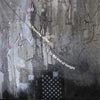 Bits of vehemence become swallowed in layers ofpretty chords and moments of relative peace over and over again. Addunexpected time signature changes and stop and go dynamics andbasically every aspect of this EP has been covered adequately. Ifnovelty is found to be necessary, behold the furious slamming of adrummer playing behind a child's first trap set and be satisfied. Whilethe percussion does sound amazingly sharp and sits well with the wallsof musical whirlwind that move with it, the necessity of using achild's drum kit is questionable and stands out like a bad stage propmeant for audience amusement only. "It's Christmas Time Again...," theEP's final track, is an eleven-plus minute monstrosity composed of eachof the previous three tracks: this basically adds up to more of thesame. Instrumental passages of romping grind and heaviness juxtaposedby melancholy and riffs right out of 80's do not become more impressiveover time. This music is not like a good bowl of chili; it doesn'ttaste better the next day or after it's been sitting in the fridge fora night. After being offered song after song of repetitive andultimately uniform rhythmic torture, By the End of Tonight sounds likeit just doesn't have enough ideas for an EP, so the prospects of abetter full-length seem dim for this band. They're all technicallyaccomplished performers, but that doesn't make up for the lack ofsubstance that ultimately dominates their recorded performance.
Bits of vehemence become swallowed in layers ofpretty chords and moments of relative peace over and over again. Addunexpected time signature changes and stop and go dynamics andbasically every aspect of this EP has been covered adequately. Ifnovelty is found to be necessary, behold the furious slamming of adrummer playing behind a child's first trap set and be satisfied. Whilethe percussion does sound amazingly sharp and sits well with the wallsof musical whirlwind that move with it, the necessity of using achild's drum kit is questionable and stands out like a bad stage propmeant for audience amusement only. "It's Christmas Time Again...," theEP's final track, is an eleven-plus minute monstrosity composed of eachof the previous three tracks: this basically adds up to more of thesame. Instrumental passages of romping grind and heaviness juxtaposedby melancholy and riffs right out of 80's do not become more impressiveover time. This music is not like a good bowl of chili; it doesn'ttaste better the next day or after it's been sitting in the fridge fora night. After being offered song after song of repetitive andultimately uniform rhythmic torture, By the End of Tonight sounds likeit just doesn't have enough ideas for an EP, so the prospects of abetter full-length seem dim for this band. They're all technicallyaccomplished performers, but that doesn't make up for the lack ofsubstance that ultimately dominates their recorded performance. samples:
Read More
- Administrator
- Albums and Singles
Phiiliip
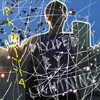 He spells his namePhiiliip so that Google searches return more accurate results, and getsinvited to open for Momus on his 2001 American Patchwork tour. I was atthe show, and though I found Phiiliip's fried electropop to beexcruciating at best, I found the man himself to be strikinglyattractive, in that post-Danceteria-Berliniamsburg-by-way-of-West-Hollywood kind of way(which probably says more about my bizarre predilection for thatemaciated hustler hipster look than it does about Phiiliip'sbeauty), and I was seduced into buying his debut album Pet Cancer.When I finally got up the courage to actually listen to the CD, I wasquite bemused by the artist's combination of Beck vocals, Gary Numanposturing and Larry Tee electrotrash bedroom electronics. I was alsobemused by the constant drug references ("U Did 2 Much K") and thepersistently nihilistic lyrics. Though I still wasn't convinced thatPhiiliip had any real value musically, his album was at least funny andendearingly odd. Not that I spun the thing very often, the cheaplylopsided beat programming and annoying vocal processing making it apretty trying listen.
He spells his namePhiiliip so that Google searches return more accurate results, and getsinvited to open for Momus on his 2001 American Patchwork tour. I was atthe show, and though I found Phiiliip's fried electropop to beexcruciating at best, I found the man himself to be strikinglyattractive, in that post-Danceteria-Berliniamsburg-by-way-of-West-Hollywood kind of way(which probably says more about my bizarre predilection for thatemaciated hustler hipster look than it does about Phiiliip'sbeauty), and I was seduced into buying his debut album Pet Cancer.When I finally got up the courage to actually listen to the CD, I wasquite bemused by the artist's combination of Beck vocals, Gary Numanposturing and Larry Tee electrotrash bedroom electronics. I was alsobemused by the constant drug references ("U Did 2 Much K") and thepersistently nihilistic lyrics. Though I still wasn't convinced thatPhiiliip had any real value musically, his album was at least funny andendearingly odd. Not that I spun the thing very often, the cheaplylopsided beat programming and annoying vocal processing making it apretty trying listen. Now comes the follow-up, complete with an arsenalof guest appearances from The Soft Pink Truth, The Streets, Avenue D,Excepter and Khan. While Phiiliip seems to be attempting to move awayfrom the schizoid bedroom pop thing and a little more into music thatcould be deemed danceable (maybe), Divided By Lightning isunmistakably still the work of that cute but untalented aesthete Ifirst laid eyes on four years ago. More stunningly annoying beatprogramming covered up by layers of digital sediment and bafflinglyoverworked vocal mutations. More lyrics about sex, drugs, exclusive loftparties, nouns, zombies, drugs, clothes, drugs, celebrities, self-pityand drugs. Hell, I'd be the last person to criticize an artist becauseof his obsession with drugs or drug music, but Phiiliip's drugobsession seems particularly lazy. He explicitly references Ketamineand Adderall in the liner notes, both of which I am familiar with frompersonal abuse, and I'm not at all surprised that Phiiliip is tooderanged to be able to tell good from bad.
The best moments on thealbum come from the collaborations, with the clean-edged throbbingsassiness of "4 the 2nd (Soft Pink Truth Remix)" and "Off the Leash(Khan Remix)" coming the closest to Phiiliip's experimental artfagdance music aspirations. Other tracks attempt to piggyback the NYCnoise movement, most notably "Blue Moon (Excepter Remix)," whichsubjects the Henry Mancini classic to the Black Dice treatment. Just toenforce the painful eclecticism of the album, Phiiliip ends with asustained power electronics attack ("Fuck Music") and a low-fi versionof the Boyz II Men ballad "It's So Hard to Say Goodbye to Yesterday."It's all so incredibly fucking weird that I really wish I couldrecommend it, but I can't.
samples:
Read More
- Administrator
- Albums and Singles
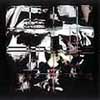 Thankfully, Kirk's creative juices and frustration with the state of the world birthed this diverse yet cohesive collection of forward-thinking music from the former Cabaret Voltaire member. Though the title is an overt nod to King Tubby, Kirk doesn't let that restrict him from showcasing work encompassing various genre influences, regularly within the same song. The opener, titled "The Truck Bombers Of Suburbia", exhibits this eclecticism at its most extreme, with awkwardly looped and heavily effected samples of classic rock, funk, and dub abruptly clashing with one another. Previously released as a 12" single, the grinding quasi-dancehall track "Who's Afraid (Of The Red White And Blue)" sets the tone for this largely nasty, aggressive album and introduces listeners to vocalist Pat Riot, who I can only assume is yet another entry in Kirk's lengthy list of pseudonyms. (Rather than confuse readers further, Kirk and Riot will be treated as separate entities for the duration of the review.) Riot's distorted voice can also be heard growling midway through the handclap-heavy dark techno number "Smoke Em Out," a reference to George W. Bush's blunt yet unsuccessful approach to dealing with Al Qaeda in Afghanistan. "Goat Dub Reaction" mixes Middle Eastern melodies and keyboard strings and pulses over looped hand percussion rhythms, with the occasional vocal from Riot. On "Desert Rhumba," Kirk updates the classic Sheffield bleep sound he helped define, with a gritty synth riff driving a litany of furious protest chants. "Heart And Mind Of Dub" closes things out with a relatively traditional dub groove, its instrumentation augmented with liberal use of echo chamber delay and even a noisy remnant from earlier on the album. Despite the diverse influences represented here, this is a remarkably complete release, with the vocals effectively holding several tracks together that may have seemed too different otherwise. As an eager follower of Kirk's recent output, I can say that this is his most accessible album in some time, and the best so far of his post-9/11 work. I cannot help but wonder what would happen if only other electronic artists, particularly those of the younger generation, would follow his lead and use their music to speak against injustice, hypocrisy, or whatever specific issue concerns them. Call me what you will, but if this is the type of music that war and right-wing global politics can spawn, then we need a lot more of it. Get cracking, people.
Thankfully, Kirk's creative juices and frustration with the state of the world birthed this diverse yet cohesive collection of forward-thinking music from the former Cabaret Voltaire member. Though the title is an overt nod to King Tubby, Kirk doesn't let that restrict him from showcasing work encompassing various genre influences, regularly within the same song. The opener, titled "The Truck Bombers Of Suburbia", exhibits this eclecticism at its most extreme, with awkwardly looped and heavily effected samples of classic rock, funk, and dub abruptly clashing with one another. Previously released as a 12" single, the grinding quasi-dancehall track "Who's Afraid (Of The Red White And Blue)" sets the tone for this largely nasty, aggressive album and introduces listeners to vocalist Pat Riot, who I can only assume is yet another entry in Kirk's lengthy list of pseudonyms. (Rather than confuse readers further, Kirk and Riot will be treated as separate entities for the duration of the review.) Riot's distorted voice can also be heard growling midway through the handclap-heavy dark techno number "Smoke Em Out," a reference to George W. Bush's blunt yet unsuccessful approach to dealing with Al Qaeda in Afghanistan. "Goat Dub Reaction" mixes Middle Eastern melodies and keyboard strings and pulses over looped hand percussion rhythms, with the occasional vocal from Riot. On "Desert Rhumba," Kirk updates the classic Sheffield bleep sound he helped define, with a gritty synth riff driving a litany of furious protest chants. "Heart And Mind Of Dub" closes things out with a relatively traditional dub groove, its instrumentation augmented with liberal use of echo chamber delay and even a noisy remnant from earlier on the album. Despite the diverse influences represented here, this is a remarkably complete release, with the vocals effectively holding several tracks together that may have seemed too different otherwise. As an eager follower of Kirk's recent output, I can say that this is his most accessible album in some time, and the best so far of his post-9/11 work. I cannot help but wonder what would happen if only other electronic artists, particularly those of the younger generation, would follow his lead and use their music to speak against injustice, hypocrisy, or whatever specific issue concerns them. Call me what you will, but if this is the type of music that war and right-wing global politics can spawn, then we need a lot more of it. Get cracking, people.
samples:
Read More

